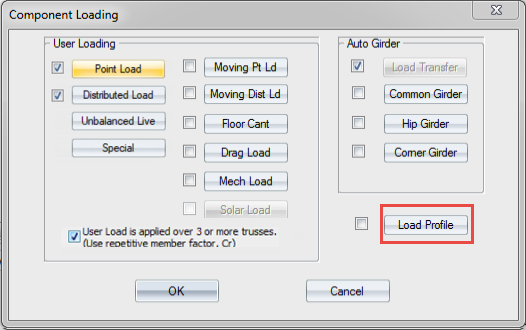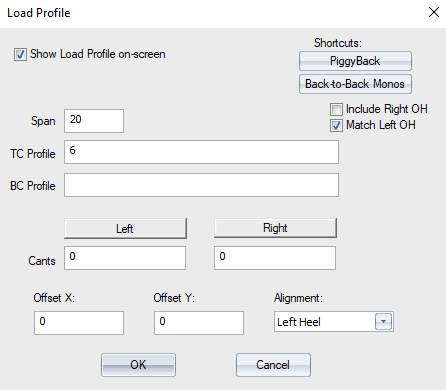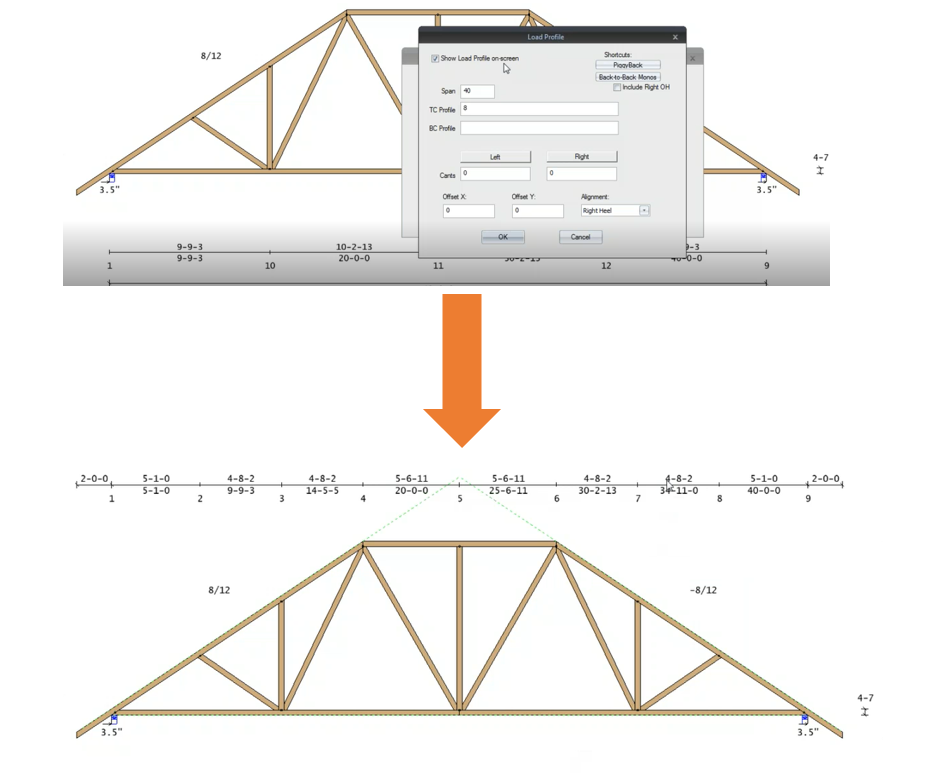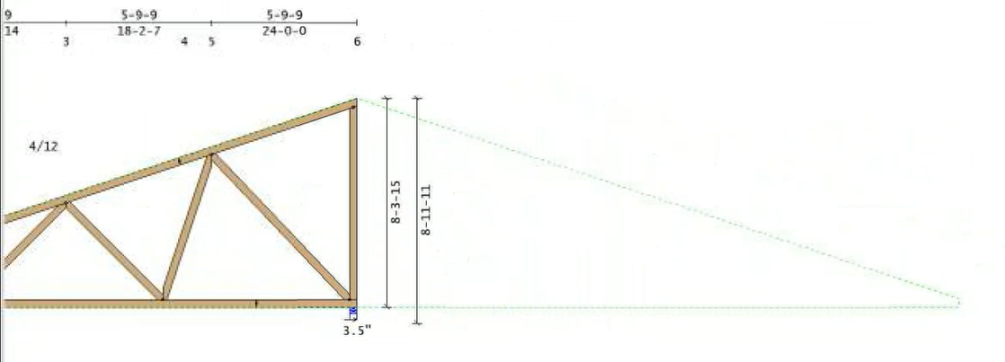Purpose
This feature is useful when the actual profile of a building does not match the profile of the truss, and the loading must be based on the building profile, not the truss profile. Common situations include:
- Piggyback - both the cap truss and base truss need to be loaded for the overall profile
- Back-to-back monos
- Any truss with non-structural overframing on the TC especially
- Some hip conditions or valley conditions where the shape is not built into the truss
- Stub conditions
- Bearing conditions where there is an exposed porch area
Steps
- Click Component.
The Component Loading dialog displays.

- Click Load Profile.
The Load Profile dialog displays.

Complete the following information:
Show Load Profile on-screen - when checked, an outline of the load profile overlays the actual truss on-screen
Shortcuts - when you click one of these options, information is entered on the dialog for you, based on either a Piggyback or Back-to-Back Mono condition. You may need to edit this information based on your truss profile.
- Piggyback - when selected, the following information is populated in the Load Profile dialog:
- Span = the physical truss span
- TC Profile = the physical truss, but only the heel height and first TC pitch are used. For example, if the physical truss is ha600 12 10 0 150608 -12e the Load Profile TC profile is ha600 12.
- BC Profile = the physical truss
- Cants = the physical truss
- Offsets = 0 for both X and Y
- Alignment = Left Heel
Loading is based on a peaked truss

- Back-to-back Monos - when selected, the following information is populated in the Load Profile dialog:
- Span = the physical truss span x 2. For example, if the physical truss is a 40 foot span, the Load Profile span = 80 feet
- If there is a right overhang, that distance is included in the original span. For example, a 40 foot span with a 2' overhang = 42' total, making the Load Profile span = 84 feet.


- The Match Left OH check box is selected by default, but can be unchecked if the right mono is not a match with the left mono.
- If there is a right overhang, that distance is included in the original span. For example, a 40 foot span with a 2' overhang = 42' total, making the Load Profile span = 84 feet.
- TC Profile = the physical truss, but only the heel height and first TC pitch are used. For example, if the physical truss is ha600 12 10 0 150608 -12e the Load Profile TC profile is ha600 12.
- BC Profile = the physical truss
- Cants = the physical truss; whatever is used for the left cantilever entry is also used for the right cantilever entry. For example, if the physical truss has a 3-foot cantilever left, and a 0 foot cantilever right, the Load Profile will have both left and right cantilevers = 3 feet.
- Offsets = 0 for both X and Y
- Alignment = Left Heel
When you click the Back-to-back Monos option, the span is automatically doubled. Creates a symmetrical load profile based on the actual truss.
Loading will be based on a 48' truss (rather than 24').


 Note: This feature does not affect loads that are controlled by web patterns.
Note: This feature does not affect loads that are controlled by web patterns.
Defining a Load Profile on a truss will override Overhang Support loads and load combinations.
